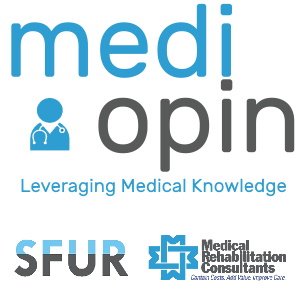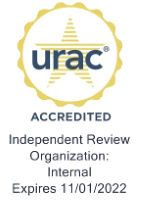Welcome
Company Newsletter
Managing Director
Mediopin News
SFUR Medical Director Receives Milliman Care Guidelines (MCG) Certification
SFUR Medical Director, Dr. Matt O’Toole, MD, CPC, has completed the Milliman Care Guidelines Specialist in Utilization Management Certification, which focuses on clinical indications for admission, optimal and general recovery course, and extended stay.
“We support and applaud the efforts of all our employees to pursue continuing education and development,” said William Dagher, Mediopin Managing Director.
The certification supports analyses essential to SFUR’s continued leadership in medical cost containment programs for our clients.
The Milliman Care Guidelines are widely used by hospitals nationwide. Dr. O’Toole and the SFUR team will be uniquely positioned to combine guideline expertise with clinical experience on a variety of projects. These include projects related to medical necessity of hospital admission, level of care determination (inpatient vs observation), appropriateness of discharge, and many more.
Mediopin News
MRC and Synergy Care Announce The Launch of A New Virtual and Worksite Physical Therapy Network
MRC in Spokane Washington, and Synergy Care in Lake Charles, Louisiana, will be providing the administrative and network resources to support national virtual physical therapy and worksite therapy programs.
The new service will provide access to therapies that can help employees and dependents be more productive at work and healthier at home. National Health Plan Administrator, ACS Benefit Services in Winston-Salem, North Carolina, will be the first health plan administrator offering the program.
“This innovative approach to providing first-rate physical therapy services not only elevates member access to quality care, but also, it introduces an immediate opportunity for significant plan savings for our clients. We continue to focus on rapid innovation, being simultaneously socially responsible. MRC’s virtual therapy program is highly accessible, easy to use, and cost-effective. It’s a personalized approach to health and wellness like we’ve never seen before,” ACS CEO, Kari L. Niblack said in a statement.
The advantages of virtual physical therapy have been widely examined during the pandemic, and the results are very favorable. In addition to virtual capabilities, therapy programs can be designed for worksite applications.
“Our therapy partnership blossomed out of the need to serve plan participants during the COVID-19 pandemic. Prior to this, Synergy Care was foundationally based on serving seniors in senior facilities. Those skills are now needed virtually to serve all age groups, making the therapy services much more personal and individualized. The program will have application to our health plan and workers compensation clients,” said Jitana Bagomolny, MRC COO.
ACS/VPT Press Release
MRC and Synergy Care Announce The Launch of A New Virtual and Worksite Physical Therapy Network
Mediopin News
SFUR VP, Scott Gladish, RHU, Joins ARAWC Communications Committee
SFUR VP of Sales and Marketing, Scott Gladish, RHU, recently joined the Association for Responsible Alternatives to Worker’s Compensation (ARAWC)’s Communications Committee to assist it in its mission of protecting and promoting Texas injury benefit programs.
SFUR is entering its second year of ARAWC membership and has been providing medical bill analysis and negotiations to multiple injury benefit programs in Texas since 2019.
Karl Seelbach, an attorney who serves on ARAWC’s Executive Committee states: “We are excited to have Scott Gladish join the ARAWC team and help us advance our efforts to provide better medical outcomes and improved benefits for injured workers, as well as cost savings for employers.”
ARAWC is the premier trade association for Texas injury benefit programs and the creator of QCARE (Qualified Compensation Alternative for Recovering Employees), a simple, no-cost, online designation to recognize employers with a responsible Texas injury benefit program that satisfies high industry standards.
A growing number of companies have received the QCARE designation. Approximately 400,000 Texas employees are currently covered by a QCARE-designated injury benefit program in Texas.
For more information about ARAWC or QCARE, please visit www.arawc.org or www.qcare.org.
Mediopin News
MRC Welcomes Sales Wolverine To Team
University of Michigan Wolverine, Kristen Light of Atlanta, Georgia, has joined the currently virtual sales staff at MRC as our Account Executive to assist with business development.
“We welcome Kristen to the team, and we are already impressed with her work ethic and contribution,” said Scott Gladish, Vice President of Sales and Marketing.
Kristen joins MRC after many years in sales and business development in the media industry. She says of her new position: “I am delighted to be working for such a glorious group of people who have the abilities and the brainpower to make a real positive difference in the healthcare world.”
Please join us in welcoming Kristen to the team!
Kristen Light
Account Executive
Medical Rehabilitation Consultants
Phone: 770-309-2444
[email protected]
www.medrehabconsultants.com








